Simulation equipment
Trainer "Lively Anna"
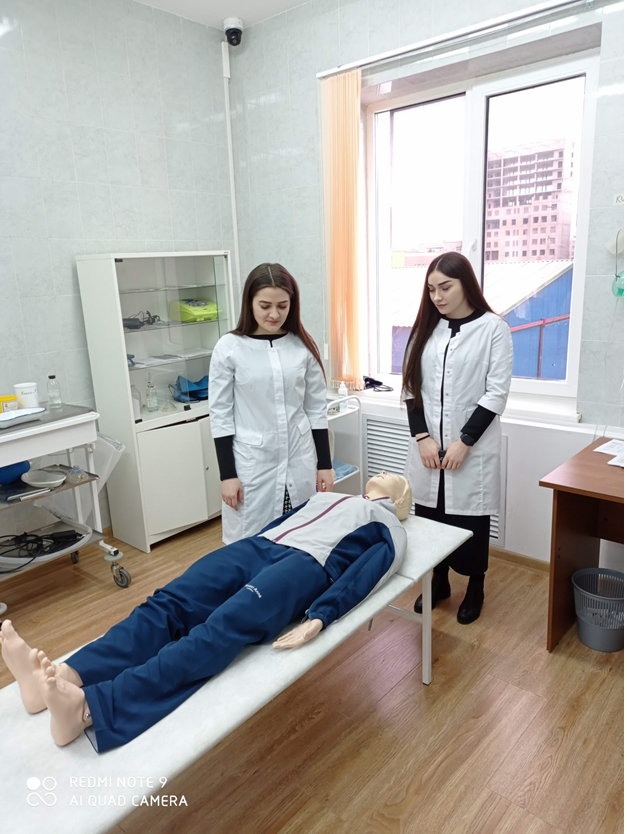
Characteristics:
-A realistic, hard-wearing trainer for practicing basic CPR skills
-More than 500 million people around the world have been trained on the mannequin to perform CPR since 1960
-The CPR procedure follows the 2015 American Heart Association guidelines
The configuration of the simulator for a complete workout:
1.animated Anna QCPR
2.animated Anna QCPR with airway
3.Revived Anna QCPR with automatic external defibrillation (AED)
4.Revived Anna QCPR with airway and IDA
-any configuration is available in 2 sizes:
*full height mannequin
*torso
Wireless operation thanks to built-in rechargeable battery
-realistic anatomical landmarks
-breathing system:
-head tilt/chin lift, mandibular extension
-aspiration airway sanitation (airway configuration)
-Mouth-to-mouth, mouth-to-mouth ventilations (except airway configurations)
-Ambu bag application
-Sellick technique
-Installation of oro- and nasophangial airways (airway configurations)
-Installation of a laryngeal mask (airway configuration)
-Installation of CombiTube devices (airway configurations)
-Nasogastric tube insertion (airway configurations)
-realistic chest excursion
-three springs for different degrees of chest stiffness
-carotid pulse (manual simulation with a bulb)
-defibrillation:
-defibrillation with a real device (when using the ShockLink system with training electrodes)
-skin with built-in sensors for recognizing electrode positions (IDA configurations)
-replaceable pupils: normal, dilated, constricted (airway configurations)
-additional modules for individual and team training (optional)
-Intravenous injection arm with fluid administration capability
-upper and lower extremities with articulation for rescue training
-limbs and lower extremities with simulated injuries (burns, lacerations, fractures)
-lower extremities with simulated bleeding wounds of the right thigh to practice arterial tourniquets, pressure dressings, wound tamponades
Unique feedback technology on the quality of CPR
-Built-in sensors of CPR quality indicators
-real-time assessment of CPR in progress
-trial summary score for debriefing
-Feedback devices:
-SimPad PLUS tablet computer with SkillReporter (preferred)
-SkillGuide device
-Ability to connect up to 6 dummies to one tablet and monitor the quality of CPR on one screen
Resuscitation of a child patient
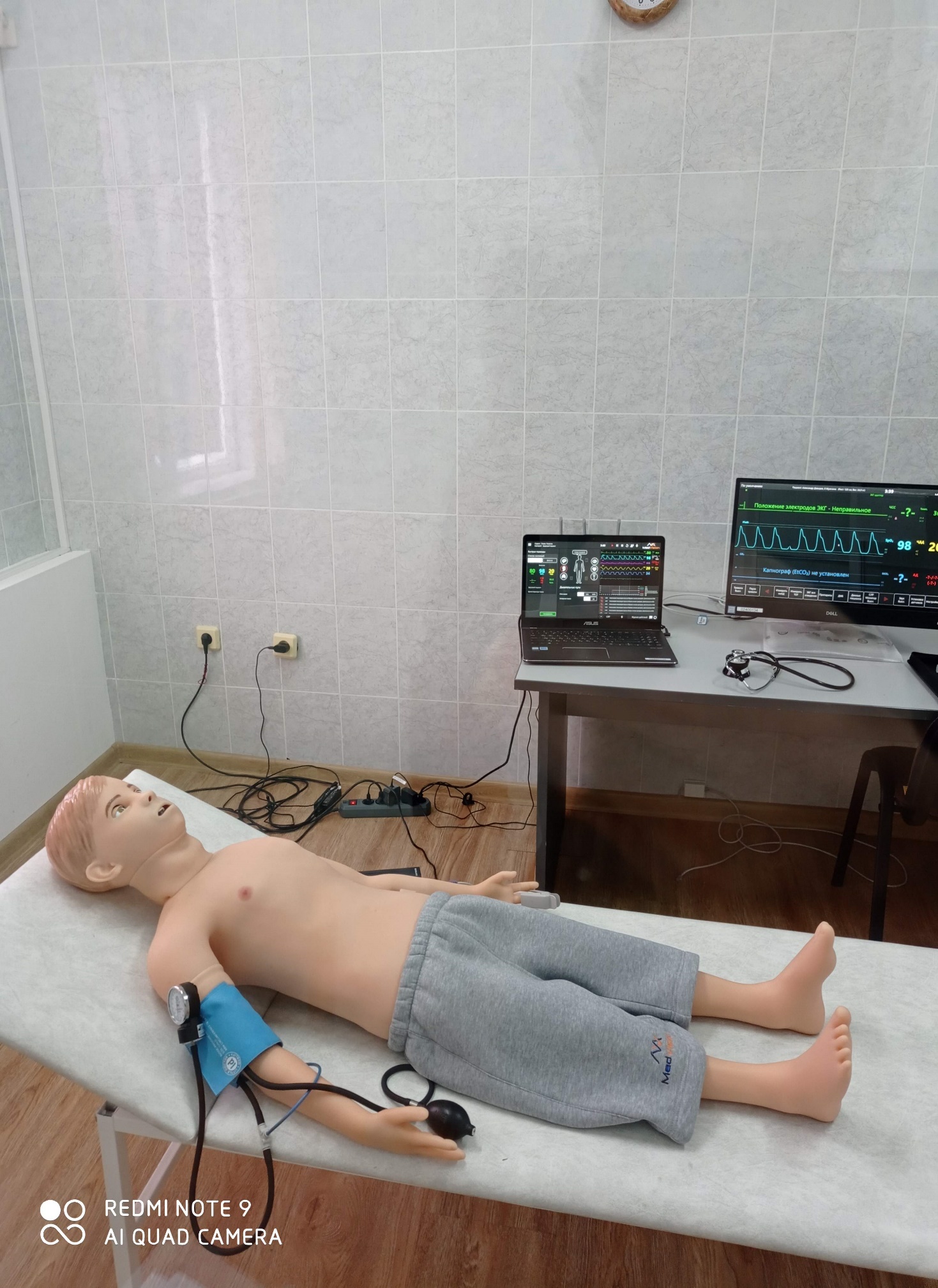
|
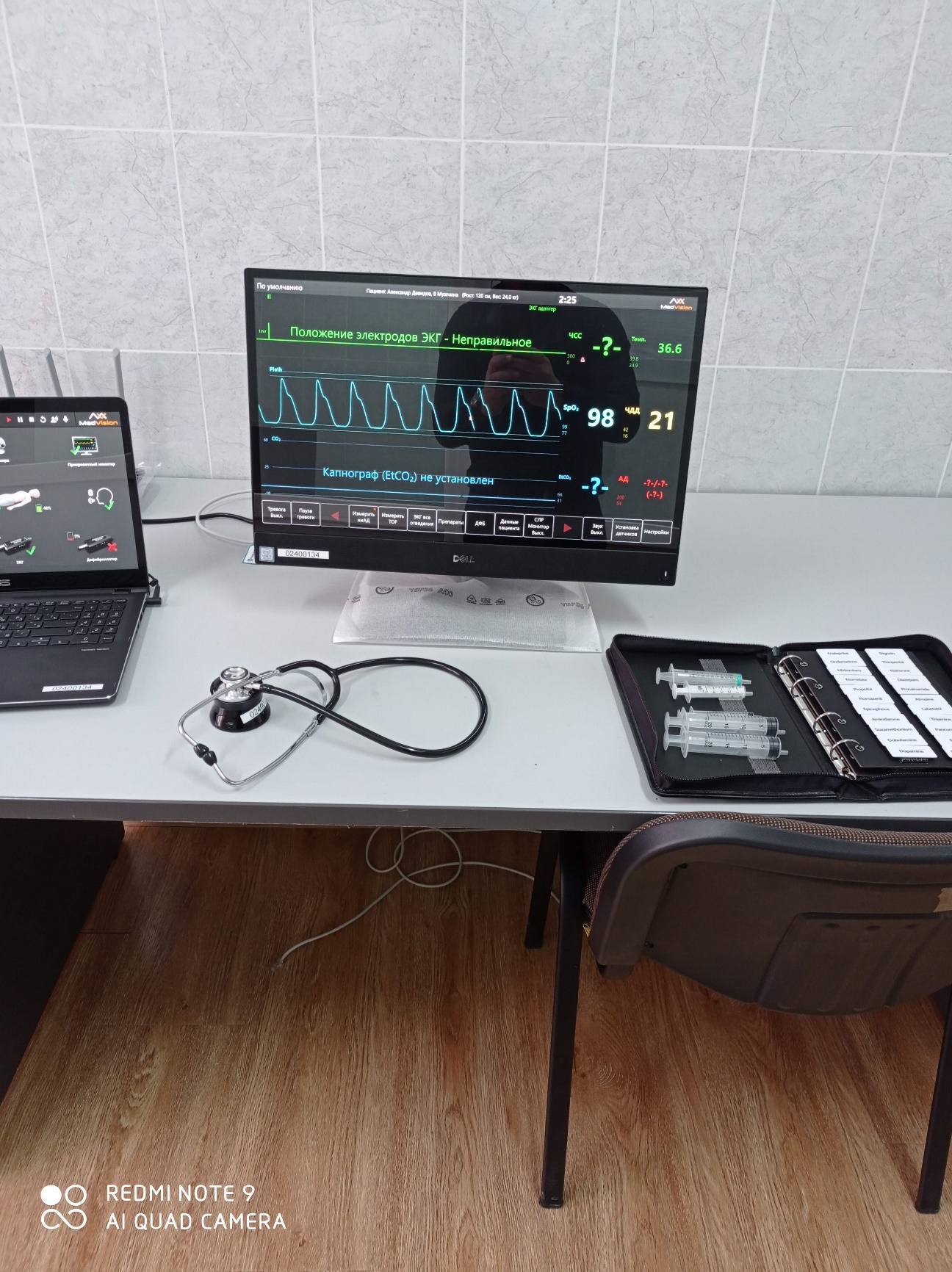
|
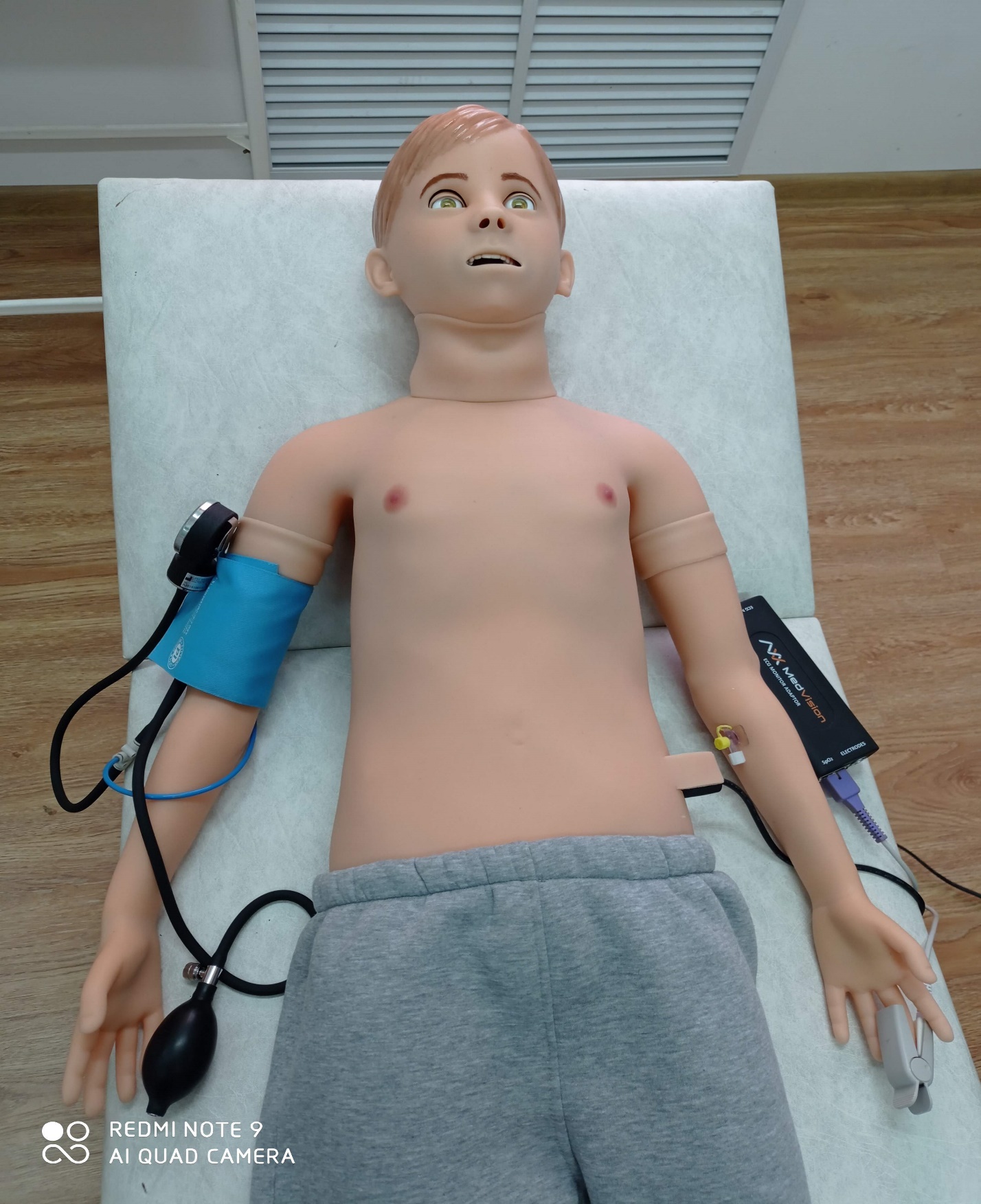
|
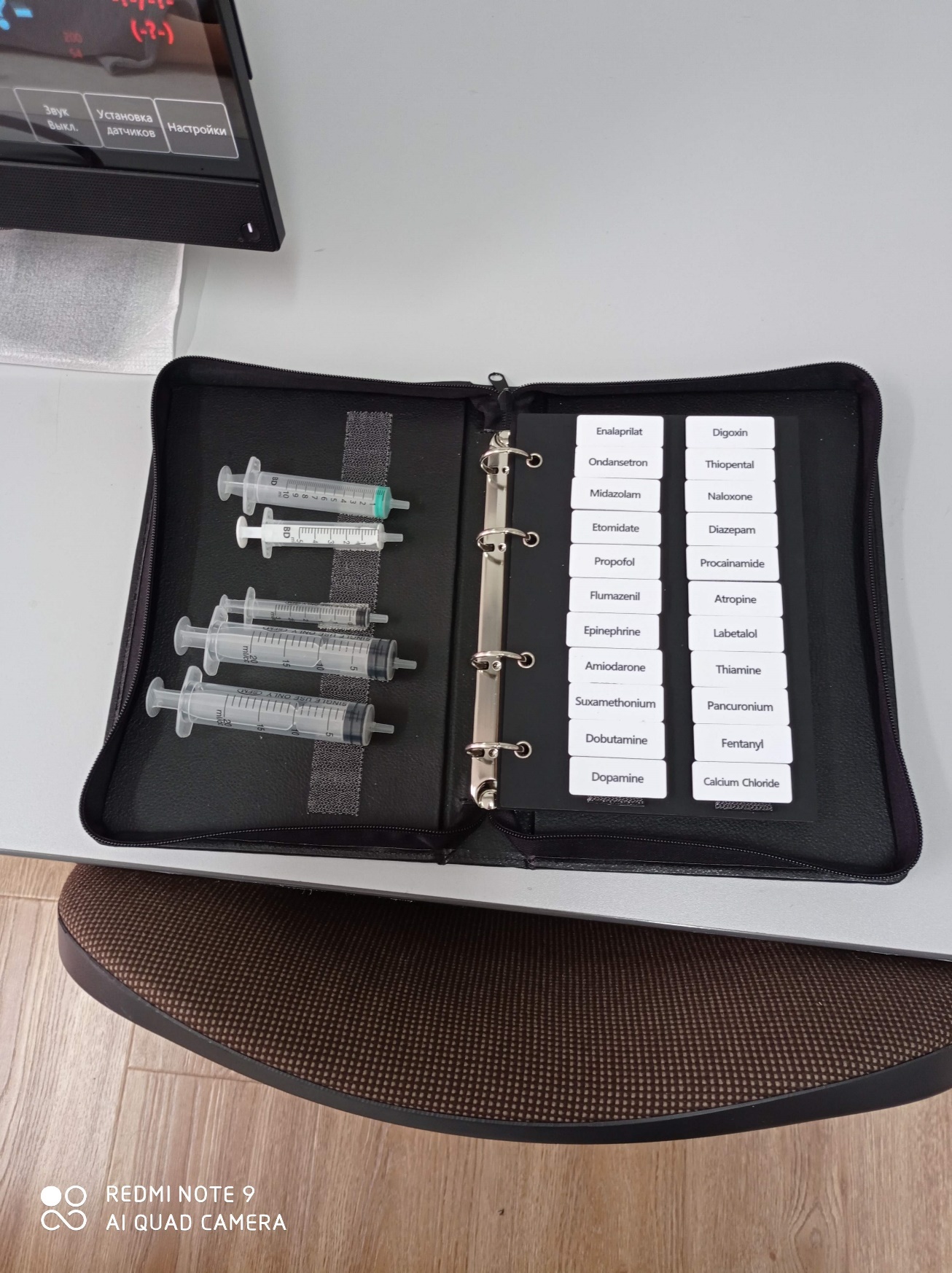
|
JUNIOR Essential (Advanced Life Support)
Autonomous robot, patient simulator for children 6-8 years old for conducting and practicing an extended range of pediatric resuscitation measures, taking into account anatomical and physiological differences, correlated with the age of the patient. Height - 120 cm, weight 30 kg
Development of clinical thinking and chiropractic skills:
- cardiopulmonary resuscitation, according to international recommendations 2010-2015, without/with the use of a real defibrillator and the possibility of using medications;
- intubation, including intubation with complications (tongue swelling, pulmonary congestion) using endotracheal tubes, LMA, Combitube and any other devices;
- practicing the Sellick technique;
- intraosseous and intravenous drug administration (automatic recognition of the type and amount of the injected drug);
- conicotomy procedure, including making an incision, insertion of a tube, insertion of drugs and use of AMBU bag;
- auscultation with determination of the correct position and interpretation of the auscultatory picture of the heart, lungs, intestines, Korotkoff tones;
- bladder catheterization (without fluid);
Features and benefits:
Optimal set of functional and software features:
- Respiratory complications, when connected to a ventilator;
- emergency aid in case of airway obstruction with imitation of corresponding clinical picture (lung congestion, tongue swelling, foreign object);
- Emergency aid in various critical situations: overdose of drugs, anaphylactic shock, hyperkalemia and others;
- emergency aid in cases of severe head, spine and thorax injuries with various physiological reactions; imitation of speech, coughing, groans, shouts and possibility of voice communication with the trainee;
- automatic blinking, depending on the physiological state of the patient; reaction of the pupils to light; pressure on the eyeball (Aschner's test);
- integration with real defibrillation apparatus (pads-adapters on irons);
- ability to adjust the state of the lungs when breathing;
- ability to use real medical devices, scalpel, endo-tracheal tubes (6-8 mm), LMA, Combitube, AMBU bag;
- adjusting the degree of resistance of the lungs;
- palpation of the pulse: at least 10 points;
- auscultation of sounds - zones of heart, lungs, intestines;
- possibility of individual adjustment of blink rate and pupil size;
- automatic recognition of the type and volume of injected drugs;
- ability to set the degree of laryngeal edema;
- setting different degrees of convulsions (hand);
- optional software "Scenario Builder" - creating and
editing of training scenarios (setting up all states of patients and transitions between them), setting up variability of events development, scenario saving in a virtual library, uploading to the main software.
